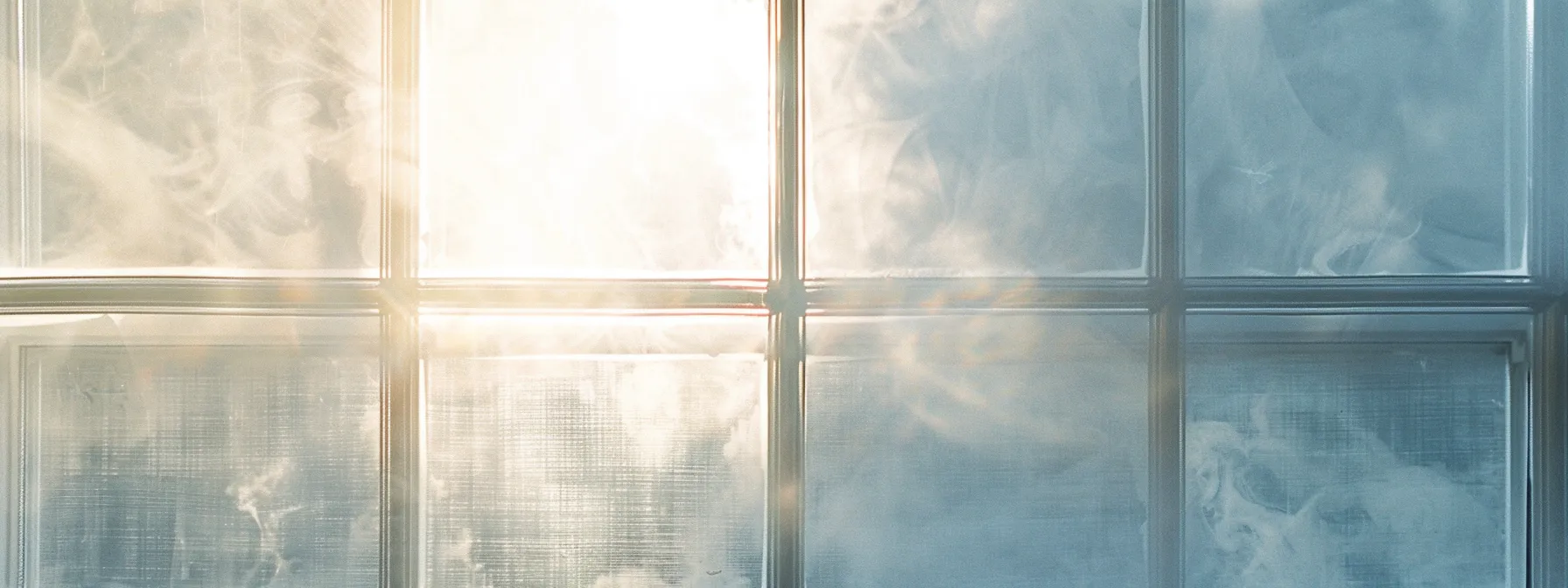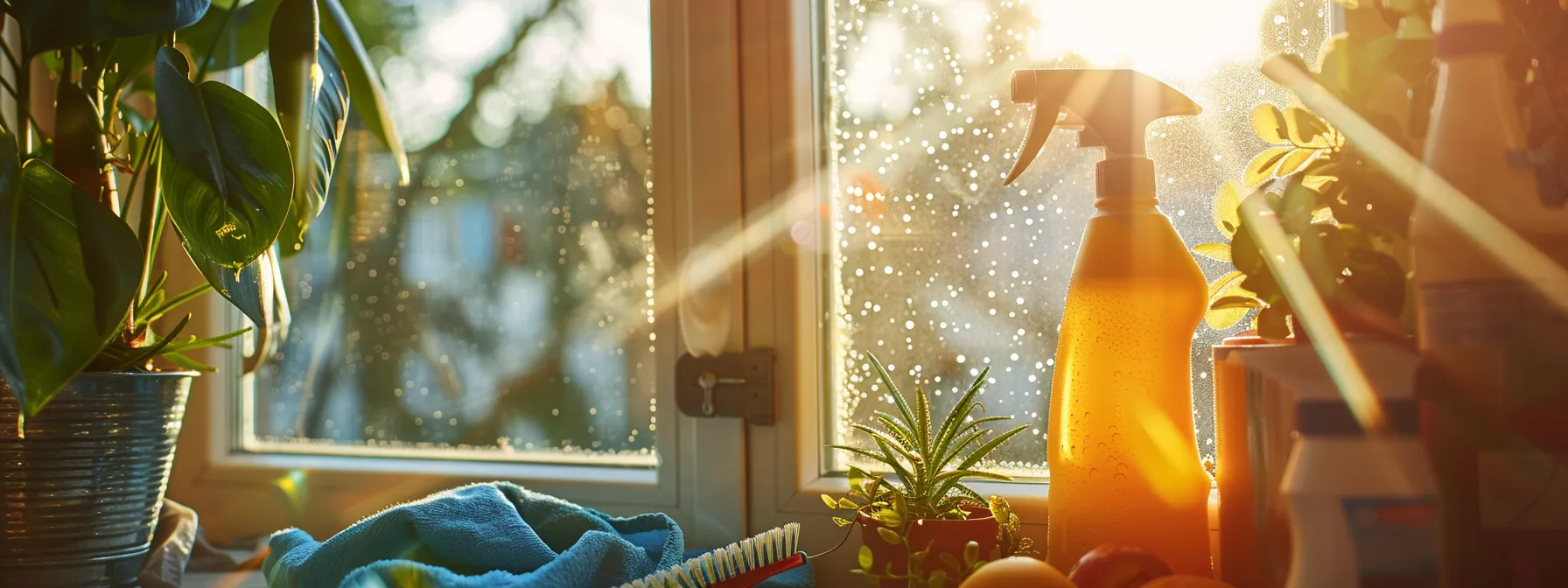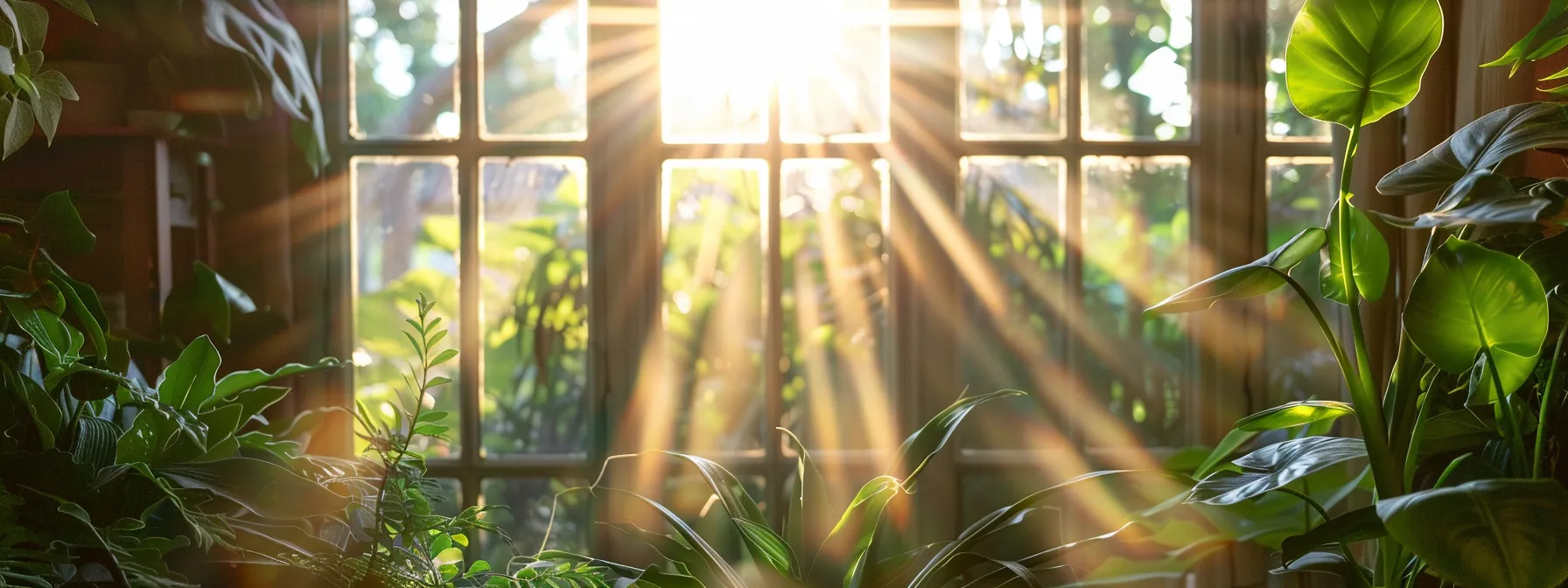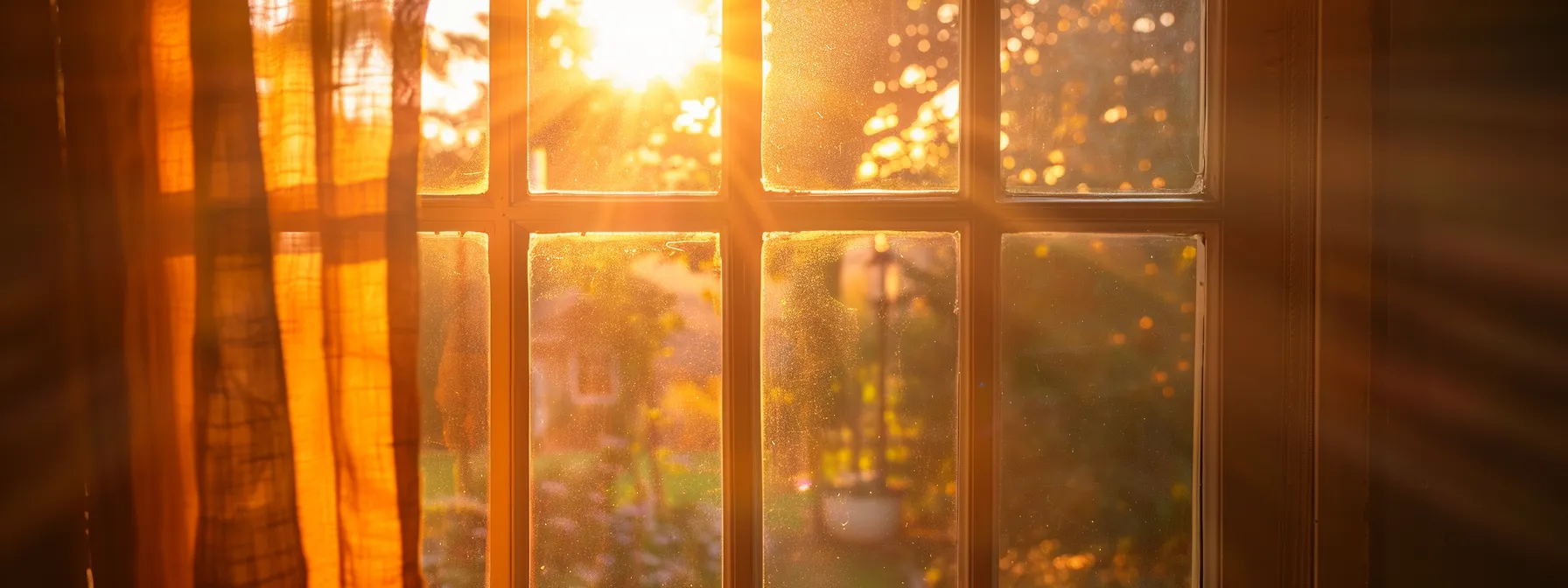Are your windows always left with streaks and smudges after cleaning? You’re not alone! Many people make simple mistakes that lead to less-than-perfect results. In this post, I’ll highlight seven common mistakes in DIY window cleaning, like failing to prepare the windows properly and using the wrong cleaning solutions. By the end, you’ll know how to achieve crystal-clear windows, making your home shine and enhancing curb appeal. Let’s dive right in and tackle those pesky cleaning errors together!
Key Takeaways
- Using the right cleaning solution is crucial for avoiding streaks and smudges
- Properly preparing windows makes a significant difference in achieving a clear finish
- Timing your cleaning around favorable weather conditions helps in getting better results
- Quality tools, like microfiber cloths and squeegees, enhance the effectiveness of the cleaning process
- Regular maintenance and inspections can prevent dirt buildup and prolong the life of your windows
7 Common Mistakes in DIY Window Cleaning That Lead to Streaks and Smudges

One of the biggest mistakes I see during DIY window cleaning is using the wrong cleaning solution. Many folks think that any household cleaner will do, but products that contain harsh chemicals can actually leave behind streaks and smudges. It’s important to choose a solution designed specifically for windows to keep your glass sparkling clear.
Another common issue arises when people don’t check the weather before they clean. Humidity can wreak havoc on your efforts, causing your cleaner to dry too quickly and leave behind marks. If it’s a muggy day, you might want to hold off until conditions are more favorable.
Many DIY cleaners underestimate the importance of technique. Using a dry cloth or paper towel can result in more streaks than you’d expect. Instead, opt for a microfiber cloth or a squeegee to achieve a streak-free finish while also improving indoor air quality by minimizing dust and pollutants.
Accidents happen, but I often notice that homeowners don’t prepare for them properly. Failing to tape off edges or shield surrounding areas can lead to spots on walls or furniture from drips or sprays. Taking a little extra time to protect your space can save you from additional cleaning later on.
Finally, pollution can play a significant role in how your windows end up looking after you clean them. If you clean your windows, only to have them exposed to airborne contaminants shortly after, they can quickly lose their shine. Regular cleaning, combined with a good window treatment, helps maintain clarity and improve your view.
Failing to Prepare Windows Properly

Before diving into window cleaning, it’s essential to tackle dust and debris that have built up over time. A thorough prep removes pollutants, and I can’t stress enough the importance of ensuring proper ventilation. This helps prevent allergy flare-ups and keeps mildew at bay. Let’s explore how to effectively clear away grime and keep your space clean and healthy. For more detailed guidance, consider exploring how to clean your windows like a pro.
Removing Dust and Dirt Accumulation
When it comes to cleaning windows, nothing quite beats starting with a good prep session to remove dust and dirt accumulation. I usually grab a damp towel to wipe down the surface before using any cleaners. This simple step reduces the risk of dirt being dragged across the glass, which can lead to scratches and additional smudges later on.
Air pollution can significantly affect the cleanliness of your windows, especially if you live in a busy urban area. By quickly dusting off surfaces, you not only clear off grime but also minimize the chance of dirt getting mixed in with your cleaning solution. Trust me, a clean start makes a world of difference when trying to achieve that crystal clear finish.
In various climates, you’ll find that pollen and other debris can add to the buildup on your windows. Taking a moment to thoroughly clear away this accumulation helps prevent accidents later in the cleaning process. You’ll find yourself with a much clearer view and a lot less hassle when you take the time to prepare properly.
Ensuring Proper Ventilation
When I approach window cleaning, I always make sure to ensure proper ventilation in the area. Proper airflow is vital for preventing buildup of dust and other airborne particles that can stick to freshly cleaned surfaces. Just think about how satisfying it feels to look out through a spotless window, free from any distractions from dust or debris.
I’ve noticed that many homeowners don’t consider how stagnant air can impact their cleaning efforts. If the space isn’t well ventilated, it can lead to moisture getting trapped, causing streaks or even promoting mold growth around the edges of the window. I take pride in providing tips that improve your cleaning routine by recommending you open windows or run fans to keep air circulating.
Good customer service means I always want to look out for your best interests. By making sure your cleaning environment is well ventilated, you not only enhance the effectiveness of your effort but also ensure that the surfaces dry properly after the cleaning is done. This simple step can help maintain the pristine condition of your windows, so you can enjoy a crystal-clear view without the worry of pesky smudges or dust settling back in.
Choosing Inappropriate Cleaning Solutions

Using the right window cleaner is key to avoiding streaks and ensuring the longevity of your glass. I’ll discuss the effects of ammonia and vinegar, which can leave haze if not used properly, and why it’s critical to avoid abrasive chemicals that can damage your windows. Let’s dive into how these choices impact your cleaning routine and the overall appearance of your windows.
Understanding the Effects of Ammonia and Vinegar
Using ammonia and vinegar on your windows can be a slippery slope. Sunlight can quickly increase the chemical reactions that occur when you use these products, leading to a haze on your glass instead of that crystal-clear shine you’re after. I’ve seen this happen countless times, especially if homeowners don’t rinse away the solution quickly enough. It’s just not worth the risk.
Another thing to watch out for is how these substances can affect window film. If you have protective film on your windows, such as UV-blocking layers, ammonia can degrade it over time, leaving you with unsightly damage. When cleaning, I always recommend using microfiber cloths to avoid scratches and ensure the best results without harming any protective features your windows may have.
Lastly, the use of these chemicals can sometimes lead to safety concerns. If mixed or used improperly, they can cause fumes that may lead to respiratory injury. It’s far better to opt for a gentle, specially formulated window cleaner that won’t leave mineral deposits or haze to ensure both your safety and the longevity of your windows. Taking these precautions can make a huge difference in maintaining that pristine view you want!
Avoiding the Use of Abrasive Chemicals
When I’m cleaning windows, I always steer clear of abrasive chemicals for a couple of reasons. First, they can scratch the glass, which not only ruins the appearance of your windows but can also compromise their energy efficiency. If your windows are damaged, it could be a costly matter for your property, and that’s the last thing you want to deal with.
Using gentler cleaning options doesn’t just protect your windows; it also keeps the surrounding areas safe from harm. I’ve seen too many customers regret using harsh products that left marks or damaged their frames. Even if a cleaning solution seems effective, it’s essential to prioritize the long-term health of your windows and property.
If you’re unsure what products to use, I recommend reaching out and asking for advice. Don’t hesitate to drop a quick email address to a local window cleaning professional who can guide you toward safe options. Taking a little time to find the right cleaning solutions saves you from making a mess and helps keep your windows shining bright for years to come.
Using Ineffective Cleaning Tools

Choosing the right cleaning tools is crucial for achieving that sparkling finish on your windows. I emphasize the importance of identifying suitable cloths and squeegees to prevent fog and smudges. It’s all about opting for quality over cheap materials—trust me, your choice can make a difference. By paying attention to these factors, you’ll be reducing the risk of scratches and ensuring proper ventilation, leading to a safer and more effective cleaning experience.
Identifying Suitable Cloths and Squeegees
Choosing the right squeegee is essential for achieving a clear finish on your windows. A squeegee with a rubber blade allows me to remove water effectively, minimizing the chance of streaks. Trust me, investing in a quality squeegee can make a world of difference when you’re battling against that pesky sunlight during the day.
When I clean windows, I always reach for microfiber cloths. These cloths are perfect because they trap dirt and dust without scratching the glass. If you opt for regular rags or paper towels, you might find yourself with more smudges, and nobody wants to end up with water damage or mold growing around their frames because of ineffective tools.
To sum things up, the right tools can lead to a far better cleaning experience. Regular cleaning might require more than just surface dusting—especially if you’re dealing with pollen or dirt buildup. Make sure to equip yourself properly, and your windows will shine like new!
Opting for Quality Over Cheap Materials
When I tackle window cleaning, I always prioritize quality tools over cheap ones. A solid squeegee with a good rubber blade makes a noticeable difference, especially on those hot sunny days when pollen is in the air. With the right equipment, I can easily clear away dirt and grime without leaving streaks behind, ensuring my windows look great without any added hassle.
I can’t stress enough how using subpar cloths can lead to more headaches than solutions. Regular rags or paper towels might leave odors or lint behind, while microfiber cloths effectively trap dirt without scratching the glass. When I’m cleaning windows, I want tools that work with me, not against me, especially since I often use a ladder to reach those high spots or clear away awnings.
Investing in better cleaning materials not only makes the job easier but also keeps safety in mind. When using ladders, having the right grip on my tools prevents personal injury, allowing me to focus on getting the job done right. So why settle for less? Choosing quality tools can make your cleaning efforts feel effortless and leave your windows sparkling clear.
Neglecting Weather Conditions

Timing is everything when it comes to window cleaning. I always recommend recognizing optimal times for cleaning to avoid issues like hard water stains or streaks caused by humidity. Staying away from rainy or overly humid days can make a huge difference in achieving that beautiful shine without the hassle of repeated scrubbing. Let’s talk about how proper timing and preparation can enhance your cleaning results!
Recognizing Optimal Times for Cleaning
Knowing the right time to clean your windows can save you a lot of headaches, and I’m all about making the cleaning process as smooth as possible. Avoiding high-pressure conditions like rainy or overly humid days is key; moisture can create condensation on the glass, leaving you with streaks no matter how hard you scrub. It’s best to tackle window cleaning on days when the weather is clear and dry.
I’ve found that mornings or late afternoons are often ideal for cleaning since the sun isn’t blazing down, which can make any cleaning solution dry too quickly. If your cleaner evaporates before you have a chance to wipe it away, you’re setting yourself up for a frustrating struggle with streaks. So, keeping an eye on the forecast can really boost your chances of achieving sparkling windows.
Timing your cleaning right also helps you avoid the hassle of future touch-ups. If you clean your windows and then get hit with rain or high humidity shortly after, all your hard work could be undone as contaminants settle back onto the glass. By planning your window cleaning sessions during optimal weather conditions, I ensure the results remain stunning for longer:
Avoiding Rainy or Humid Days
Cleaning your windows on a rainy or humid day is a surefire way to end up with unsightly streaks that only make your efforts feel wasted. I know firsthand how irritating it can be to finish a clean, only to see raindrops or moisture obscure all that hard work. The moisture in the air can create condensation that prevents the cleaner from drying properly, leaving marks that are tough to wipe away.
I’ve found that tackling window cleaning on clear, sunny days makes a big impact on the results. When weather conditions are ideal, I can apply the cleaning solution and have plenty of time to wipe it away without the fear of it drying too fast or being washed away by unexpected rain. Make it a habit to check the forecast before diving into your cleaning routine; it can save you a lot of frustration.
Don’t be tempted to start cleaning just because you have the motivation; think about the long-term results instead. Choosing to wait until the weather is cooperative ensures that your windows remain streak-free and sparkling for longer. I truly believe that recognizing when to step back is just as crucial as knowing how to clean effectively!
Overusing Cleaning Solutions

Using too much cleaning solution is a common mistake I see. It’s important to understand the right amount of product necessary, as overapplication can lead to cloudy residue buildup on your windows. In the following sections, I’ll share tips on how to avoid this issue and achieve that spotless, streak-free finish you want.
Understanding the Right Amount of Product
When it comes to cleaning your windows, I can’t emphasize enough the importance of using the right amount of product. Oversaturating the glass with cleaner not only wastes the solution but can also lead to unsightly streaks and cloudy residue. I’ve learned through experience that a light spray often does the trick—you’re better off starting small and adding more as needed.
One mistake I’ve seen frequently is people dousing their windows in cleaner, thinking they’ll achieve a better finish this way. In reality, this can backfire, especially if you’re working in direct sunlight. The solution can dry too quickly, leaving those annoying streaks behind, so adjusting the amount used based on conditions can help improve your results.
To avoid overusing cleaning solutions, I suggest using a microfiber cloth to apply and spread the cleaner evenly across the glass. This method allows you to control the amount applied while ensuring an even coverage. Trust me, a little goes a long way, and keeping it simple can help you achieve that stunning, crystal-clear finish you want for your windows.
Avoiding Residue Buildup
I’ve seen so many people make the mistake of using too much cleaning solution while washing their windows, which can lead to a frustrating buildup of residue. When you oversaturate the glass, you run the risk of leaving behind cloudy streaks that can mar the clarity of your views. It’s frustrating to put in all that effort only to have your windows looking worse than before!
To keep things crystal clear, I recommend starting with a small amount of cleaner and adjusting as needed. A light spray goes a long way in avoiding any residue buildup. I find that applying cleaner with a microfiber cloth not only helps spread it evenly but also allows me to manage how much I’m using, which makes a noticeable difference in the final result.
After cleaning, it’s a good idea to take a moment to check for any remaining streaks. If you do spot some residue, a quick wipe with a dry microfiber cloth can usually do the trick. This straightforward method keeps your windows gleaming and ensures you don’t waste time scrubbing away at stubborn marks that shouldn’t be there! Keeping an eye on your cleaning habits can really enhance the longevity and beauty of your windows. For more detailed information on maintaining your windows’ cleanliness throughout the year, you might find this guide on preventing ice dams useful, as it touches upon aspects important for window maintenance in the winter.
Not Drying Properly

Ensuring your windows dry properly is a crucial step in achieving that spotless finish. I’ll share effective techniques for drying and highlight common mistakes to watch out for, such as using the wrong materials or not taking your time. By addressing these points, you’ll improve your window cleaning routine and keep streaks and smudges at bay.
Techniques for Effective Drying
To get your windows truly spotless, drying techniques matter as much as the cleaning itself. I always recommend using a clean, dry microfiber cloth for drying. These cloths are super absorbent and don’t leave behind lint or streaks, which is exactly what you need for a flawless finish.
If you’re tackling larger windows, consider using a squeegee. I find that starting at the top and pulling the squeegee down in a straight motion helps avoid drips and ensures an even dry. After each swipe, wipe the blade with a cloth to keep it free from residue, which can lead to those dreaded streaks.
It’s also essential to take your time while drying. Rushing can result in skipped areas and leftover moisture. I often recommend working in small sections to ensure each part of the window is thoroughly dried before moving on to the next, making your efforts shine bright like new!
- Use a clean, dry microfiber cloth for drying.
- For larger windows, a squeegee is effective; pull down from the top.
- Wipe the squeegee blade after each swipe to avoid streaks.
- Work in small sections to ensure thorough drying.
Common Mistakes in Window Drying
One common mistake I see with DIY window cleaning is rushing through the drying process. It’s easy to get excited about seeing your freshly cleaned windows, but if you don’t take your time, you could end up with leftover moisture that leads to streaks. I always advise my clients to dry thoroughly and carefully, focusing on one section at a time for a perfect finish.
Another thing to watch out for is using the wrong materials. If you grab a regular towel or a non-absorbent cloth, you might find that it leaves lint or smudges on the glass. I find that using a clean, dry microfiber cloth truly makes a difference, as they absorb moisture effectively without leaving any traces behind.
Finally, don’t overlook the importance of maintaining your drying tools. If you’re using a squeegee, be sure to wipe the blade after each pass to keep it free from residue. This small step has a huge impact on avoiding streaks and achieving that spotless look you want for your windows. Taking the time to dry properly makes all the difference in the world when it comes to a crystal-clear view.
Skipping the Final Touches

After you’ve done all that hard work cleaning your windows, it’s easy to forget those final touches. I’m all about inspecting for smudges after cleaning to make sure everything looks perfect. Plus, performing regular maintenance can keep your windows shining bright for longer. In the next sections, I’ll share how to check for those pesky spots and the benefits of routine upkeep to help enhance your cleaning efforts.
Inspecting for Smudges After Cleaning
After you’ve cleaned your windows, it’s easy to get caught up in the excitement of seeing them sparkle. However, I can’t stress enough the importance of taking a moment to inspect for any smudges or streaks before calling it a job well done. Even a small stray mark can distract from the clear view you’ve worked hard to achieve.
I always recommend stepping back to look at your windows from different angles. Sometimes, what appears clean straight on can reveal smudges or spots when viewed from the side or under varying light conditions. This quick check can save you time and frustration later, ensuring that every inch of your windows shines like they should.
Regularly inspecting your windows post-cleaning helps you identify additional maintenance needs. If you notice areas that still aren’t pristine, take a moment to address them right then and there. This practice not only enhances the cleanliness of your windows but also prevents you from having to tackle the same spots again later on, making your overall cleaning routine more efficient.
- Inspect the windows from various angles to find hidden streaks.
- Address any smudges immediately for the best results.
- Make regular inspections part of your cleaning routine to enhance efficiency.
Performing Regular Maintenance for Best Results
Performing regular maintenance on your windows is key to keeping them looking sharp. I often tell my clients that a quick wipe-down every few weeks can make a huge difference. It prevents dirt and grime from building up, making those bigger cleaning jobs much easier to handle down the line.
One effective strategy I recommend is to incorporate a “check-up” on your windows into your routine cleaning schedule. This means taking a moment to inspect the glass for any signs of water stains or smudges. By addressing these issues promptly, not only do you maintain clarity, but you also save time and energy later when it comes to deeper cleaning sessions.
Finally, don’t underestimate the benefit of investing in a quality window treatment. Proper treatments can protect your glass from harsh elements, reducing the frequency of cleaning needed. With my experience, I’ve found that well-maintained windows not only improve the aesthetics of your home but also extend the life of your windows, giving you peace of mind.
Conclusion
Avoiding common mistakes in DIY window cleaning is crucial for achieving a streak-free shine that enhances your view. From using the right cleaning solutions and tools to selecting optimal weather conditions, each detail plays a significant role in the overall outcome. Regular maintenance and proper drying techniques also contribute to long-lasting clarity and cleanliness. By implementing these practices, you’ll not only improve your cleaning results but also extend the life of your windows, ensuring they remain bright and inviting.

